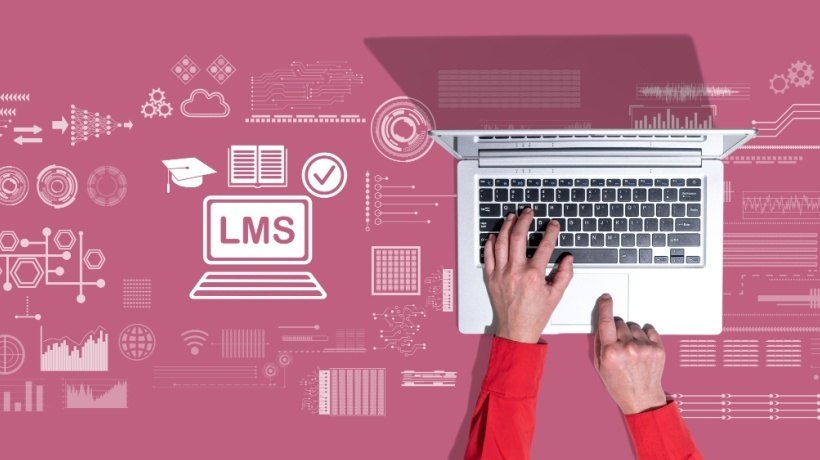Strategic Insights For Robust LMS Administration
Learning Management Systems (LMSs) are recognized as crucial platforms in the modern educational and corporate ecosystems for distributing knowledge and fostering skills acquisition. The efficiency of LMS administration depends a lot on the detailed management of user roles and permissions, which is a fundamental requirement for ensuring the integrity of operations, data privacy, and smooth learner experiences. This article will outline the advanced practices of managing user roles and permissions in your LMS by using technical language and addressing organizations that highly value information security and the setting of governance.
1. Establishing A Hierarchy Of User Roles
The process of LMS administration should be built around the identification of a proper hierarchy of user roles. The members of such a classification might be administrators, instructors, content developers, assessors, and learners. The delineation of each role should be done with utmost precision, including specifications of rights and immunities.
- Administrators
Power to the fullest extent is given to them to manage all the system configurations, user onboarding, course deployments, and reporting mechanisms. The importance of restraining the number of administrator groups to only the most trusted personnel cannot be overemphasized as their wrongdoings can lead to system-wide negative impacts. - Instructors/facilitators
Through these users, the content of instruction is curated, changed, and distributed, along with managing the assessments and guiding the learners. The segregation of permissions such as the right to edit versus view grades should be formulated based on expertise and accountability. - Content developers
Individuals who are responsible for the design and management of the instructional materials but they don't have the authority to change learner records or course enrollments. - Learners/participants
The most significant and the most limited group that can only access the courses they are enrolled in and some additional resources.
A more delicate LMS administration pattern will help in delineating more custom-made roles that might be more suitable for organizational peculiarities. The thorough documentation of the permission matrices is what is primarily responsible for transparency and makes efficient troubleshooting possible.
2. Principles Of Least Privilege
The principle of least privilege (PoLP) is one of the main features of LMS administration. Every user should have only those permissions which are absolutely necessary for them to carry out their assigned functions. Access permissions that are more than necessary will pose an operational risk and may lead to situations where security is breached unintentionally or the data is compromised. To implement PoLP:
- Fine-grained permissions
Use LMS platforms that allow the highly detailed configuration of rights—down to the level of the object, field, or data. - Dynamic role assignment
Set up procedures where the roles are immediately changed according to changes in responsibilities or stages of the project. - Periodic auditing
Conduct systematic examinations of permission allocations, correct differences, and remove obsolete credentials. The process can be facilitated by automated auditing tools that are integrated into sophisticated LMS solutions.
3. Role-Based Access Control (RBAC) Versus Attribute-Based Approaches
LMS administration usually depends heavily on role-based access control (RBAC) as the primary tool. This concept assigns the rights that come with a role instead of single users thus providing improved scalability and uniformity. With the organic growth of complexity, attribute-based access control (ABAC) might become a better option. It is a model where user attributes, environment context, or resource classification govern the access.
- ABAC gives the possibility to control permissions depending on variables such as department, location, or seniority in multi-tenant or globally distributed environments.
- The hybrid models which are a combination of RBAC and ABAC not only give maximum flexibility but are also capable of adjusting to the changing landscape of an organization.
4. Onboarding And Offboarding Protocols
While onboarding mechanisms ensure workforce integration, they must also work as a safeguard for the organization's sensitive resources.
- Automating role assignments through the use of an onboarding procedure which works in conjunction with the Human Resources Information System (HRIS) means personnel records are in sync with LMS privileges.
- Offboarding functionalities are expected to be effective in immediately revoking access rights when a person is terminated or their job changes so that there is no room for infiltration into the system by unauthorized individuals.
The issue of timing, especially in permission modification, is very important in sectors that are heavily regulated and rely on following certain rules and regulations.
5. Continuous Education And Policy Dissemination
For the most part, technical controls alone cannot fully complement the LMS administration in the role of policy and guidelines dissemination. A well-managed LMS administration comprises regular seminars, interactive compliance modules, and detailed user manuals that clearly state the reasons and consequences of roles and permissions.
- Promote awareness about phishing, social engineering, and credential management.
- Encourage a culture of accountability where users understand access rights and the power of their actions.
6. Leveraging Automation And Delegation
With LMS ecosystems expanding, the manual control of roles and permissions is no longer feasible. The administration of an LMS should use automation for:
- Role assignment
Connect with identity management platforms and single sign-on (SSO) services for effortless provisioning. - Delegated administration
Give limited administrative rights to mid-level managers or department heads, decentralizing oversight but maintaining systemic cohesion. - Self-service features
Allow users to request specific permissions or roles, with approval workflows that keep oversight but eliminate bureaucratic latency.
Besides making the operational process smoother, automation is also one of the major ways to diminish human errors.
7. Robust Monitoring And Incident Response
Surveillance of user behavior and resource utilization is the fundamental part of any secure LMS administration strategy.
- Introduce audit trails and comprehensive logging to record user activities.
- Implement Machine Learning algorithms to pinpoint deviations from normal behavior, such as illegal access or privilege escalation attempts.
- Establish procedures for the rapid extinction of threats and the reversal of illegal actions to go along with your incident response protocols.
The complementing of LMS admin with enterprise security information and event management (SIEM) tools guarantees systemic watchfulness.
8. Customization And Scalability
Every organization changes, so LMS administration policies must also be flexible. Take a periodical look at your roles and permissions schema to check if they are still flexible and scalable.
- Custom roles along with dynamic permission sets must be looked over not only every six months but also whenever major changes in the organization occur, so as to be able to keep business processes up-to-date with the evolving enterprise.
- LMS platforms that come with APIs and scripting capabilities make it easier for users to change the platform and integrate it with current enterprise systems.
9. Regulatory Compliance And Data Protection
LMS administration along with any data protection measures must comply with every international standard (e.g., GDPR, HIPAA, and FERPA) that applies in its area of operations.
- Do not allow anybody access to PII unless it is absolutely necessary. The data should only be accessible from the least privileged roles.
- Keep a close watch on international access to make sure that data leaving one country and entering another is at all times compliant with the region's laws.
- Use encryption for both data at rest and in transit.
Furthermore, regular compliance assessment and well-planned documentation of user permissions ensure that the organization is held accountable and legally defensible.
10. Managing Third-Party Integrations
Modern LMS platforms are often connected with external applications, such as analytics tools, content repositories, social networks, etc. Effective LMS administration should confirm that third-party integrations do not destroy the integrity of your permission structures.
- Ensure third-party products meet security compliance standards before any integration is allowed.
- Use OAuth or similar security methods for controlling permission across different applications.
- Stop or limit the functionalities of integrated apps that can bypass LMS permission controls.
11. Fostering Collaboration While Preserving Security
It is a difficult task to manage collaboration and security at the same time in LMS administration. Roles and permissions should make it possible for the employees to work together and share resources, but still be able to impose the necessary limitations.
- Create "collaborator" roles that allow interactions between different courses, co-creation of content, and facilitation of discussions, but without access to learner data or any admin functions.
- Use project-based or time-limited roles for assigning temporary permissions only and then automatically remove access when the project comes to an end.
12. Future-Proofing LMS Administration
LMS administration is getting a new face with the help of predictive analytics, AI-driven access management, and adaptive role assignment. Move beyond static paradigms and accept smart systems that:
- Suggest the most suitable permission sets based on usage patterns and historical data.
- Immediately adjust roles and permissions accordingly in the case of an organization change.
- Come with dashboards and visualizations that show user privileges quite comprehensively.
Conclusion
The activity of controlling user roles and permissions in your LMS is complex, which means you need to be capable of handling security, control, and change management effectively. If you follow the recommended routines above, which are based on hierarchical role structuring, the principle of least privilege, automation, careful monitoring, and compliance, you will set up a strong and easily expandable LMS administration base. Since companies use the broadest digital learning methods more, it will be necessary to keep the roles and permissions in proper order to have a flawless performance, protect information, and maintain the growth of the organization.
Editor's Note: Check out our directory to find, choose, and compare eLearning Industry's Top LMS Software.








